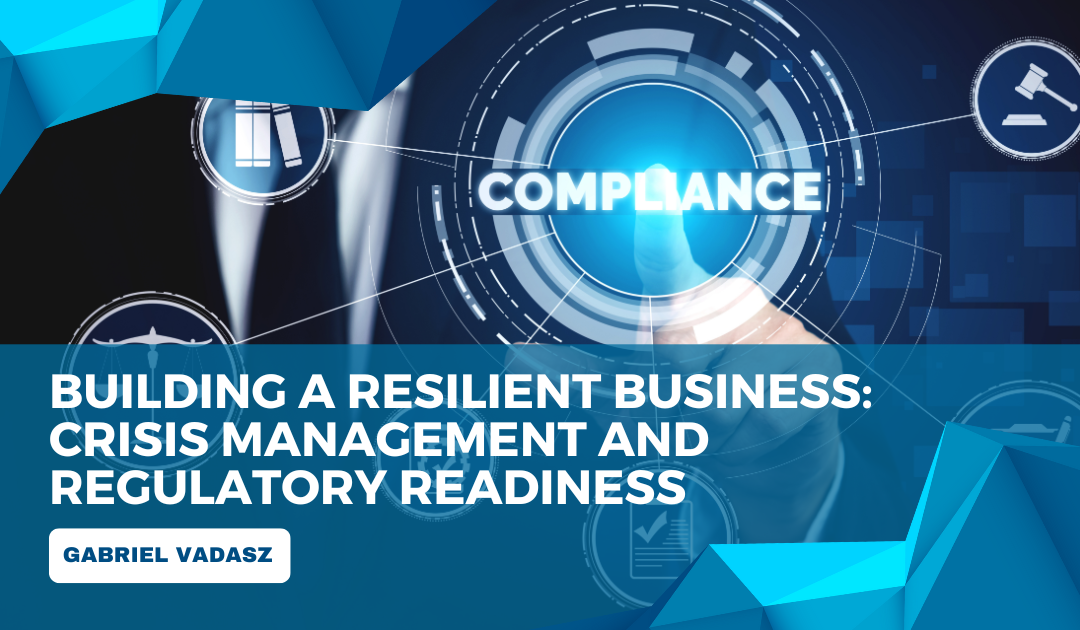In an unpredictable world where economic disruptions, global pandemics, cybersecurity threats, and supply chain challenges can emerge without warning, building a resilient business has become more than a competitive advantage—it is a necessity. Resilience allows a business not only to survive crises but to adapt, evolve, and even emerge stronger. Central to resilience are two critical pillars: crisis management and regulatory readiness.
Crisis management is the ability to effectively respond to unexpected disruptions. While crises are often impossible to predict, how a business prepares for and reacts to them can determine long-term viability. This begins with developing a comprehensive crisis management plan that includes risk assessment, response protocols, communication strategies, and recovery procedures.
The first step in crisis preparedness is identifying potential threats. These may range from natural disasters and cyberattacks to market volatility or public relations incidents. A business should conduct regular risk assessments and scenario planning exercises to understand where it is most vulnerable and how those vulnerabilities could impact operations.
Once risks are identified, the organization should establish clear response teams with defined roles and responsibilities. This includes leadership, operations, IT, communications, legal, and human resources. Having a designated crisis management team enables rapid and coordinated responses, ensuring that decisions are made quickly and executed effectively.
Communication plays a pivotal role in managing any crisis. Internally, employees must be kept informed with timely, accurate, and empathetic messaging. Externally, customers, partners, investors, and regulators must be reassured that the business is taking control of the situation. Transparent communication builds trust and reduces panic.
Equally important is the ability to recover. Resilient businesses use crises as opportunities to review what went wrong, implement corrective actions, and improve future response capabilities. Post-crisis analysis and knowledge-sharing ensure that lessons learned become part of the organization’s long-term strategy.
Alongside crisis management, regulatory readiness is another essential element of resilience. Businesses today operate in increasingly complex and evolving regulatory environments. Compliance is no longer just about avoiding penalties—it’s about protecting brand reputation, ensuring operational continuity, and maintaining customer trust.
Regulatory readiness means staying up to date with laws, guidelines, and industry standards relevant to your business. This includes areas like data privacy, labor laws, environmental regulations, product safety, and financial reporting. Assigning compliance responsibilities and providing regular training to employees ensures everyone understands their roles in maintaining compliance.
Maintaining accurate documentation and clear audit trails helps businesses demonstrate compliance during regulatory reviews or investigations. Investing in legal counsel or regulatory technology platforms can also help automate and streamline compliance tracking, reporting, and risk management.
Proactive engagement with regulators can further strengthen resilience. Businesses that maintain open communication with regulatory bodies, respond promptly to inquiries, and demonstrate a willingness to cooperate tend to fare better during audits or legal proceedings.
Another critical aspect of regulatory readiness is the ability to adapt to new laws and standards quickly. This agility ensures that compliance does not lag behind legislative changes, minimizing business disruption and safeguarding operations.
When crisis management and regulatory readiness are integrated into a company’s strategic planning, the result is a robust, adaptive business model. Employees are empowered, leadership is prepared, operations are secure, and the company is positioned to respond to—and recover from—unexpected events.
Resilient businesses are not the ones that avoid failure or disruption; they are the ones that anticipate challenges, respond with clarity and confidence, and use adversity as a springboard for innovation and growth. By embedding crisis and compliance preparedness into the DNA of the organization, companies can safeguard their future, protect their people, and thrive in an ever-changing world.
